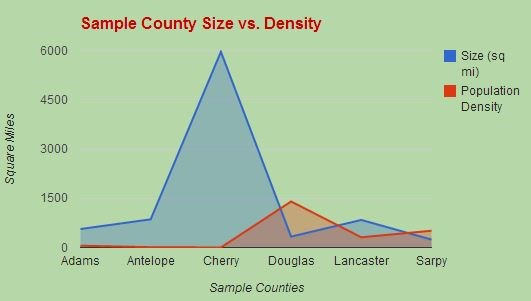Origins of County Names:
US Presidents: Adams, Arthur, Fillmore, Garfield, Grant, Hayes, Jefferson, Lincoln, Madison*, Pierce, Polk, Washington (12)
US Vice Presidents and presidential candidates (excludes those who became president): Blaine, Clay, Colfax, Douglas, (Richard Mentor) Johnson (5)
Nebraska territorial or state governors: Boyd, Burt, Dawes, Furnas, Nance, Richardson, Saunders, Thayer (8)
Native Tribes / Tribal Branches: Cheyenne, Dakota, Otoe, Pawnee, Sioux (5)
Native Tribal Words: Keya Paha (Wakpa) (“turtle hill river”), Nemaha (“miry water”) (2)
Other Notable Americans: (Horace) Greeley, (Daniel) Boone, (Benjamin) Franklin, (Alexander) Hamilton, (Daniel) Webster, (William) Butler, (Lewis) Cass, (Samuel) Cherry, (Augustus) Hall, (Joseph) Holt, (Henry) Knox, (“Mad Anthony”) Wayne (12)
Early Settler Families: Brown, Deuel, Dixon (3)
Other Notable Nebraskans: Chase, Cuming, Dawson, Dundy, Gage, Gosper, Harlan, Hitchcock, Keith, Kimball, Morrill, Nuckolls, Phelps, Sarpy, Thurston, Wheeler (16)
French Words: Loup (“wolf”), Platte (“flat”) (2)
Bodies of water, geological, botanical or zoological attributes, descriptions: Antelope, Banner, Box Butte, Buffalo, Cedar, Frontier, Garden, Loup, Platte, Red Willow, Rock, Saline**, Scotts Bluff, Valley (14)
Civil War notables: George Armstrong Custer, Augustus Caesar Dodge, Stephen A. Douglas, Ulysses Simpson Grant, Joseph Hooker, Oliver Otis Howard, Abraham Lincoln, John Alexander Logan, James Birdseye McPherson, William Henry Seward, Philip Henry Sheridan, William Tecumseh Sherman, Edwin McMasters Stanton, George Henry Thomas (14)
Other places: Fort Kearny, Lancaster (Pennsylvania/England), Madison, Wisconsin*, York (Pennsylvania/England) (4)
A Politician’s Wife: Elvira Merrick, wife of Henry DePuy
Railroad Big Shot: Charles Perkins
*Historians are divided about whether Madison County was named after the president or the city where many of its settlers were from. The Madison County government site favors the Wisconsin story.
**The early settlers’ hopes of a large salt deposit turned out to be misguided, and Saline County is no saltier than its neighboring counties.
Fun facts:
- Cherry County, at nearly six thousand square miles, is one of the largest counties in the US. Its population density is 1 person per square mile. (The population density in Douglas County is 1,401 persons per square mile.) One of only a few US counties to include 2 different time zones, Cherry County is larger than three US states, Connecticut, Delaware and Rhode Island.
